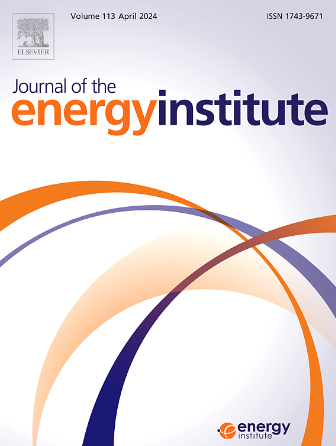Cu-ZnO/Al2O3泡沫陶瓷催化剂上等离子体催化CO2加氢
IF 6.2
2区 工程技术
Q2 ENERGY & FUELS
引用次数: 0
摘要
等离子体催化CO2加氢是一种很有前途的温和条件下CO2转化利用方法。本研究采用Cu-ZnO/Al2O3泡沫陶瓷催化剂(CZAxy,其中xy表示CuO-to-ZnO质量比x:y)填充平行板介质阻挡放电(DBD)反应器,用于等离子体催化CO2加氢。结果表明,ZnO在CZAxy催化剂中的掺入在Cu-ZnO界面处产生了协同作用。za21催化剂的cuo - zno质量比为2:1,具有最高的比表面积、最强的Cu-ZnO相互作用和最大的CO2吸附能力。这些增强的催化剂性能有助于提高气体转化率,使用CZA21催化剂时,CO2和H2的转化率最高,分别达到22.4%和15.5%。CZAxy催化剂的存在抑制了CO的形成,同时促进了液体产物的生成,特别是甲醇和乙醇等醇的生成。CZA21催化剂对甲醇(20.9%)和乙醇(3.6%)的选择性最高,而对主要气态产物CO的选择性降至68.5%。在反应过程中,CZAxy催化剂表现出较高的稳定性,并提高了气体转化和产物生成的能量产率,其中CZA21催化剂表现出最好的性能。本文章由计算机程序翻译,如有差异,请以英文原文为准。
Plasma-catalytic CO2 hydrogenation over Cu-ZnO/Al2O3 foam ceramic catalysts
CO2 hydrogenation using plasma catalysis is a promising approach for CO2 conversion and utilization under mild conditions. In this study, a parallel-plate dielectric barrier discharge (DBD) reactor packed with Cu-ZnO/Al2O3 foam ceramic catalysts (CZAxy, where xy denotes the CuO-to-ZnO mass ratio x:y) was developed for plasma-catalytic CO2 hydrogenation. The results demonstrate that the incorporation of ZnO in the CZAxy catalysts created a synergistic interaction at the Cu-ZnO interface. An optimal CuO-to-ZnO mass ratio of 2:1 was identified in the CZA21 catalyst, which exhibited the highest specific surface area, the strongest Cu-ZnO interaction, and the greatest CO2 adsorption capacity. These enhanced catalyst properties contributed to improved gas conversion, with the highest CO2 and H2 conversions reaching 22.4% and 15.5%, respectively, using the CZA21 catalyst. The presence of the CZAxy catalysts suppressed the formation of CO while promoting the generation of liquid products, particularly alcohols such as methanol and ethanol. The CZA21 catalyst achieved the highest selectivities for methanol (20.9%) and ethanol (3.6%), while the selectivity of the primary gaseous product, CO, was reduced to 68.5%. The CZAxy catalysts demonstrated high stability during the reaction and enhanced energy yields for both gas conversion and product generation, with the CZA21 catalyst exhibiting the best performance.
求助全文
通过发布文献求助,成功后即可免费获取论文全文。
去求助
来源期刊

Journal of The Energy Institute
工程技术-能源与燃料
CiteScore
10.60
自引率
5.30%
发文量
166
审稿时长
16 days
期刊介绍:
The Journal of the Energy Institute provides peer reviewed coverage of original high quality research on energy, engineering and technology.The coverage is broad and the main areas of interest include:
Combustion engineering and associated technologies; process heating; power generation; engines and propulsion; emissions and environmental pollution control; clean coal technologies; carbon abatement technologies
Emissions and environmental pollution control; safety and hazards;
Clean coal technologies; carbon abatement technologies, including carbon capture and storage, CCS;
Petroleum engineering and fuel quality, including storage and transport
Alternative energy sources; biomass utilisation and biomass conversion technologies; energy from waste, incineration and recycling
Energy conversion, energy recovery and energy efficiency; space heating, fuel cells, heat pumps and cooling systems
Energy storage
The journal''s coverage reflects changes in energy technology that result from the transition to more efficient energy production and end use together with reduced carbon emission.
 求助内容:
求助内容: 应助结果提醒方式:
应助结果提醒方式:


